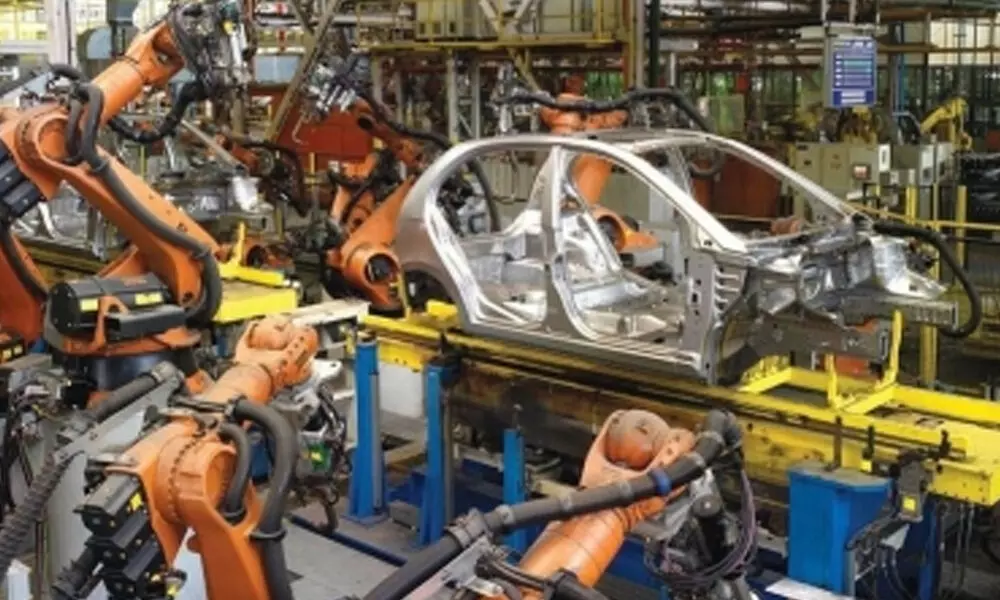Auto sector may post double-digit growth next fiscal
Crisil pointed out that since the third quarter of this fiscal, however, all three OEM segments have seen their sales volume reach and even surpass pre-Covid levels, and the recovery should be sharper next fiscal
image for illustrative purpose

PVs, TWs and CVs expected to see 23-25%, 18-20% and 34-36% volume growth respectively, says credit ratings agency Crisil
New Delhi: After two years of sluggishness, India's automobile sector is set to post double-digit growth next fiscal, said credit ratings agency Crisil. As per the agency, the growth will be supported by improving the economic situation and personal incomes.
It estimated that passenger vehicles (PVs), two-wheelers (TWs) and commercial vehicles (CVs) are expected to see 23-25 per cent, 18-20 per cent and 34-36 per cent volume growth, respectively, next fiscal, compared with contractions of 3-5 per cent, 12-14 per cent and 19-21 per cent, respectively, in the current fiscal. "Our analysis of 800 listed companies shows salary cuts made in the first quarter of this fiscal have largely been restored by the manufacturing sector, while the IT sector is continuing to offer raises," said Pushan Sharma, Associate Director, Crisil Research.
"Consequently, sentiment among urban consumers, who account for a crucial 65 per cent of PV sales and 40 per cent of TW sales, has improved. This, and buoyancy in rural income, augur well." Besides, the increase in the cost of acquisition of PVs and TWs including insurance, registration, down-payment, and ex-showroom price next fiscal will be moderate at 3-4 per cent compared with a combined 8-11 per cent rise in fiscals 2020 and 2021.
That, along with new model launches and quest for safe personal transport options will stoke demand for PVs and TWs, Crisil said. Furthermore, it cited that the demand for CVs is expected to be stronger next fiscal, riding on a significantly low base, improving economic activity since the third quarter of this fiscal, and government thrust on road infrastructure. Gradual reopening of schools and offices, and pick-up in the retail sector will support demand for buses and light CVs, respectively.
Accordingly, the CV segment, which depends heavily on financing, hard-braked as financiers lowered loan-to-value after a plunge in freight demand after the onset of the pandemic squeezed the cash flows of fleet operators. Nonetheless, only a third of the interest rate reduction has been passed on by lenders to fleet operators, leaving them chary of spending on replacements.
Additionally, Crisil pointed out that since the third quarter of this fiscal, however, all three OEM segments have seen their sales volume reach and even surpass pre-Covid levels, and the recovery should be sharper next fiscal. But given the low base of the past two fiscals, volumes across segments are unlikely to reach the previous peak seen in fiscal 2019.
In addition, Sameer Charania, Director, Crisil Ratings said: "Operating margins of OEMs could rebound to almost 2019 levels next fiscal despite rising commodity and freight rates because the increase in cost will be offset by higher volume and price hikes. OEMs had raised prices this January and another hike is likely in the near term." Moreover, Crisil said that trends in consumer discretionary spend and government spending on infrastructure, especially roads, need monitoring since that would determine the extent of pick-up in demand for OEMs next fiscal.
Supply constraints owing to limited availability of semiconductors would also bear a watching.

